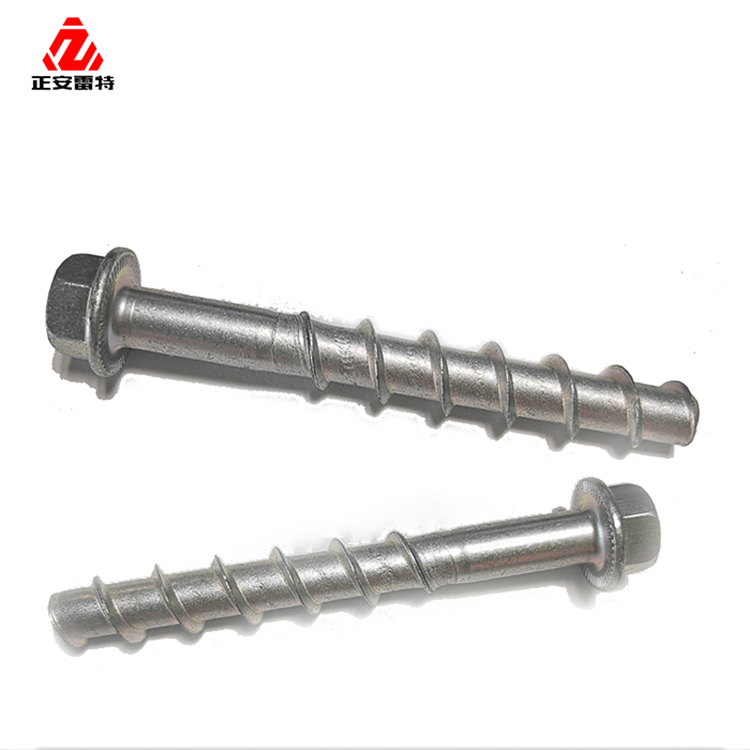- Español
- Português
- русский
- Français
- 日本語
- Deutsch
- tiếng Việt
- Italiano
- Nederlands
- ภาษาไทย
- Polski
- 한국어
- Svenska
- magyar
- Malay
- বাংলা ভাষার
- Dansk
- Suomi
- हिन्दी
- Pilipino
- Türkçe
- Gaeilge
- العربية
- Indonesia
- Norsk
- تمل
- český
- ελληνικά
- український
- Javanese
- فارسی
- தமிழ்
- తెలుగు
- नेपाली
- Burmese
- български
- ລາວ
- Latine
- Қазақша
- Euskal
- Azərbaycan
- Slovenský jazyk
- Македонски
- Lietuvos
- Eesti Keel
- Română
- Slovenski
- मराठी
- Srpski језик
Common Defects and Influencing Factors of Bolts
2021-07-23
There are many kinds of bolt heat treatment defects, such as insufficient surface hardness, soft spots, insufficient tensile strength, large deformation, quenching cracking, surface oxidation and so on. Among them, quenching cracking is one of the most dangerous heat treatment defects. It directly caused the scrap of the product.
1. Quenching temperature
Increase the quenching temperature of carbon steel and low alloy steel. Not only will the thermal stress increase, but also because of the increase in hardenability, it will also increase the structural stress, which will eventually increase the tendency of deformation and cracking. Excessive quenching temperature is likely to cause warpage. For slender bolts, under the premise of ensuring performance indicators, try to use a lower quenching temperature.
2. Original organization and residual stress
The original structure before quenching will also have a great impact on the heat treatment performance. The original structure includes the inclusion grade, band structure, original grain size, degree of component segregation, the distribution direction of free carbonized substances, and the difference obtained by different preliminary heat treatments. Organization and so on.
3. The size and distribution of residual stress before quenching will also affect the performance of the product after quenching. For example, machining, forging, welding, correction, etc. can all produce residual stress. If annealing is not carried out before quenching to eliminate, the tendency of deformation and cracking will increase.
4. Medium cooling rate
The faster the cooling rate, the greater the quenching internal stress and the greater the tendency of deformation and cracking. The cooling capacity of the medium mainly depends on its physical characteristics. Such as viscosity, heat capacity, wettability, etc., but the process parameters such as temperature, stirring and concentration also have a great influence on the cooling capacity. Improper selection will inevitably cause heat treatment defects. For carbon steel fasteners, most of them use water-based quenching medium. But it has more process parameters than quenching oil. The requirements for crafts and operators are high, and maintenance and testing must be done during use. Common problems of water-based products [3]:
5. The medium concentration is too low
If the concentration is too low, it is easy to cause deformation and cracking defects. Therefore, it is necessary to strengthen the concentration detection and make adjustments in time. Currently. The concentration detection at the production site mainly uses a refractometer. Due to pollution and medium aging, the refractive index will be reduced. If the new liquid is used, the refractive index concentration will be overestimated.
6. The temperature of the medium is too low or too high. The liquid temperature of the water-soluble quenching medium has a great influence on the disheartened cooling characteristics. When using, it should be equipped with a circulation depression system to adjust the bath temperature during use. Too high or too low temperature may cause deformation and cracking of the workpiece. Polyglycol (PAG) water-soluble quenching medium has unique inverse solubility, that is, its solubility in water decreases with increasing temperature. After the medium temperature rises, the evaporation increases, the vapor film stage is greatly extended, and the maximum disheartened cooling rate decreases. Generally, the use temperature must be less than 60°C. When the temperature is too high, the separation of PAG and water will occur, and the cooling characteristics will occur. Great changes, eventually leading to heat treatment defects.
7. Medium aging
The quenching and cooling process is a very harsh environment for use. Oxidative degradation, thermal degradation, mechanical degradation, etc. will cause the PAG molecular chain to break and become shorter. The shorter the molecular chain means the lower the viscosity, but the convective depression stage is closely related to the fluidity of the medium. The viscosity becomes smaller and the convection cooling speed increases.
8. Medium contamination
For the water-soluble quenching medium, external pollution must be strictly avoided, especially the easy-emulsified oil mixed into the tank liquid will emulsify the water agent, making it depressed but the characteristics of it will be greatly changed. However, its own pollution should also attract enough attention.
9. Improper mixing
The stirring of the medium should enable the medium to flow evenly and smoothly and eliminate stagnant areas.Increasing the stirring can destroy the vapor film stage faster and make the cooling uniform. Insufficient mixing can easily cause defects such as insufficient hardness and soft spots; excessive mixing speed can easily cause air to be mixed and cause depression but unevenness, and it is also easy to cause defects such as deformation and uneven hardness. Most mesh belt furnace production lines use propellers for stirring, which must be inserted to a certain depth below the liquid surface, not less than 300mm, in addition. It is strictly forbidden to use compressed air for stirring. It not only promotes the gas to participate in the heat exchange, and causes depression but unevenness, resulting in increased deformation and quenching cracking; it also accelerates the aging and pollution of the medium and shortens its service life.

Countermeasures for common defects of bolts
1. Insufficient surface hardness, soft spots, and insufficient tensile strength
(1) For water-based quenching medium, the concentration of PAG quenching liquid can be reduced or the concentration of salt quenching liquid can be increased to speed up the cooling rate;
(2) Reduce the temperature of the quenching medium;
(3) Increase the circulation and stirring to increase the quenching intensity;
(4) Increase the quenching temperature and extend the holding time. Make the organization fully austenitized;
(5) Choose steel grades with higher carbon content or steel grades with better hardenability.
It can be verified by increasing the amount of surface grinding and comparing the hardness changes before and after. If the surface is decarburized, the carbon potential of the heating furnace needs to be increased.
2. Large deformation, quenching cracking, etc.
(1) For water-based quenching medium, the concentration of PAG quenching liquid can be increased or the concentration of salt quenching liquid can be reduced to reduce stress;
(2) Increase the temperature of the quenching liquid;
(3) Reduce the circulation volume and stirring intensity;
(4) Reduce the quenching temperature or pre-cooling and quenching;
(5) Choose steel with lower hardenability for slender bolts.
3. Slightly oxidized after quenching, the surface is black, but there is no oxide scale
(1) Increase the water pressure of the water seal and try to avoid water vapor from entering the furnace body;
(2) Clean the filter;
(3) Reduce the liquid level of the tank liquid;
(4) Strengthen stirring. Increase the cooling rate.
(5) Methanol contains excessive water content, replace qualified products
4. Severe oxidation after quenching. There is peeling of oxide scale
(1) The carrier gas (methanol) is used up, resulting in no atmosphere protection in the furnace;
(2) The furnace body is leaking, and the air tightness is quickly checked;
(3) The methanol water content exceeds the standard, and the qualified product should be replaced.






